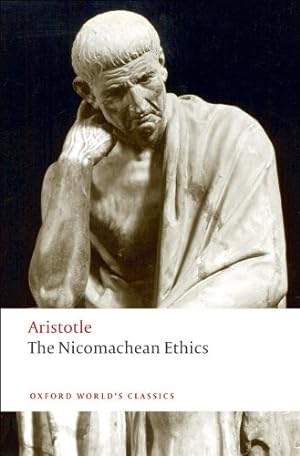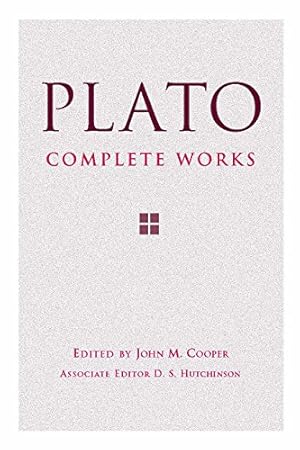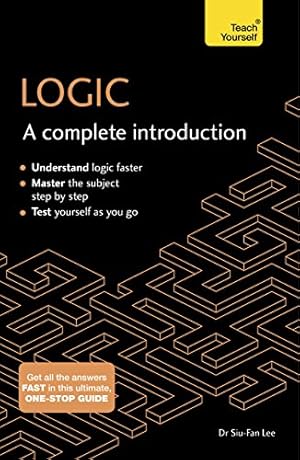Learn more
These promotions will be applied to this item:
Some promotions may be combined; others are not eligible to be combined with other offers. For details, please see the Terms & Conditions associated with these promotions.
- Highlight, take notes, and search in the book
- In this edition, page numbers are just like the physical edition
Your Memberships & Subscriptions

Download the free Kindle app and start reading Kindle books instantly on your smartphone, tablet, or computer - no Kindle device required.
Read instantly on your browser with Kindle for Web.
Using your mobile phone camera - scan the code below and download the Kindle app.

The Essential Peirce, Volume 1 (1867–1893): Selected Philosophical Writings Kindle Edition
" . . . a first-rate edition, which supersedes all other portable Peirces. . . . all the Peirce most people will ever need." —Louis Menand, The New York Review of Books
"The Monist essays are included in the first volume of the compact and welcome Essential Peirce; they are by Peirce's standards quite accessible and splendid in their cosmic scope and assertiveness." —London Review of Books
A convenient two-volume reader's edition makes accessible to students and scholars the most important philosophical papers of the brilliant American thinker Charles Sanders Peirce. This first volume presents twenty-five key texts from the first quarter century of his writing, with a clear introduction and informative headnotes. Volume 2 will highlight the development of Peirce's system of signs and his mature pragmatism.
- ISBN-13978-0253007827
- PublisherIndiana University Press
- Publication dateNovember 22, 1992
- LanguageEnglish
- File size5.2 MB
Kindle E-Readers
- Kindle Paperwhite
- Kindle Touch
- Kindle (10th Generation)
- All New Kindle E-reader
- Kindle Oasis
- Kindle Paperwhite (5th Generation)
- Kindle Oasis (9th Generation)
- Kindle Paperwhite (10th Generation)
- All New Kindle E-reader (11th Generation)
- Kindle
- Kindle Scribe (1st Generation)
- Kindle Scribe, 1st generation (2024 release)
- Kindle Voyage
- Kindle Oasis (10th Generation)
- Kindle Paperwhite (12th Generation)
- Kindle Paperwhite (11th Generation)
- All new Kindle paperwhite
Fire Tablets
Shop this series
See full series- Kindle Price:$24.73By placing your order, you're purchasing a license to the content and you agree to the Kindle Store Terms of Use.
Shop this series
This option includes 2 books.
Customers also bought or read
- Dialectic of Enlightenment: Philosophical Fragments (Cultural Memory in the Present)
 Kindle Edition$3.99$3.99
Kindle Edition$3.99$3.99 - The Constitution of Liberty: The Definitive Edition (The Collected Works of F. A. Hayek Book 1)
 Kindle Edition$18.35$18.35
Kindle Edition$18.35$18.35 - A History of Religious Ideas, Volume 2: From Gautama Buddha to the Triumph of Christianity
 Kindle Edition$28.99$28.99
Kindle Edition$28.99$28.99 - Philosophy by Other Means: The Arts in Philosophy & Philosophy in the Arts
 Kindle Edition$16.19$16.19
Kindle Edition$16.19$16.19 - Delphi Complete Works of Ralph Waldo Emerson (Illustrated) (Delphi Poets Series Book 34)
 Kindle Edition$1.99$1.99
Kindle Edition$1.99$1.99 - The Invention of Science: A New History of the Scientific RevolutionEditors' pick
 Kindle Edition$9.99$9.99
Kindle Edition$9.99$9.99 - Hegel's Phenomenology of Spirit (Studies in Phenomenology & Existential Philosophy)
 Kindle Edition$9.99$9.99
Kindle Edition$9.99$9.99 - The Visionaries: Arendt, Beauvoir, Rand, Weil, and the Power of Philosophy in Dark Times
 Kindle Edition$7.99$7.99
Kindle Edition$7.99$7.99
Customers who bought this item also bought
 The Essential Peirce, Volume 2 (1893–1913): Selected Philosophical WritingsPeirce Edition Peirce Edition ProjectKindle Edition
The Essential Peirce, Volume 2 (1893–1913): Selected Philosophical WritingsPeirce Edition Peirce Edition ProjectKindle Edition
Editorial Reviews
From Library Journal
- David Gordon, Bowling Green State Univ., Ohio
Copyright 1992 Reed Business Information, Inc.
From the Back Cover
About the Author
NATHAN HOUSER is Professor of Philosophy and Director of the Peirce Edition Project at Indiana University at Indianapolis. CHRISTIAN KLOESEL is Professor of English at Indiana University at Indianapolis.
Product details
- ASIN : B00BIP26TO
- Publisher : Indiana University Press (November 22, 1992)
- Publication date : November 22, 1992
- Language : English
- File size : 5.2 MB
- Text-to-Speech : Enabled
- Screen Reader : Supported
- Enhanced typesetting : Enabled
- X-Ray : Not Enabled
- Word Wise : Enabled
- Print length : 437 pages
- Best Sellers Rank: #168,922 in Kindle Store (See Top 100 in Kindle Store)
- Customer Reviews:
About the authors

Discover more of the author’s books, see similar authors, read book recommendations and more.

Discover more of the author’s books, see similar authors, read book recommendations and more.

Discover more of the author’s books, see similar authors, read book recommendations and more.
Customer reviews
- 5 star4 star3 star2 star1 star5 star82%13%0%0%5%82%
- 5 star4 star3 star2 star1 star4 star82%13%0%0%5%13%
- 5 star4 star3 star2 star1 star3 star82%13%0%0%5%0%
- 5 star4 star3 star2 star1 star2 star82%13%0%0%5%0%
- 5 star4 star3 star2 star1 star1 star82%13%0%0%5%5%
Customer Reviews, including Product Star Ratings help customers to learn more about the product and decide whether it is the right product for them.
To calculate the overall star rating and percentage breakdown by star, we don’t use a simple average. Instead, our system considers things like how recent a review is and if the reviewer bought the item on Amazon. It also analyzed reviews to verify trustworthiness.
Learn more how customers reviews work on AmazonTop reviews from the United States
There was a problem filtering reviews. Please reload the page.
- Reviewed in the United States on August 22, 2001I came to this book because I was inspired by "the Metaphysical Club" to learn more about the roots of pragmatism. The book is challenging. The Metaphysical Club points out that William James did not understand Peirce at first, so it is a bit much for mere mortals. It is especially daunting because the first essay is written with respect to Kant's categories, not something I know off of the top-of-my head.
However, as the books progresses many of the things that are assumed in the first essay are explained. For instance Peirce explains in detail what he means by a sign.
He discusses cognition, or consciousness and shows that logically our internal experience is based on external stimulation. It soon becomes impossible to ignore the fact that you are reading the works of a logician and that that is where he is coming from. But even though you might have to reread parts several times, once you master the arguements, it is satisfying indeed.
According to the introduction of the book and references, Peirce was influential. William James, Oliver Wendel Holmes and John Dewey were all influenced by him. Modern cognitive psychology owes much to William James. Psychology took a different direction through psychoanalysis and then behaviorism but cognitive psychology is now the dominate paradigm. Because of this Peirce has renewed importance.
My advice is to read it through once and not feel you have to get everything and the reread it because he explains things later that he assmes you know earlier.
- Reviewed in the United States on November 16, 2018If there is a bridge between William James and Immanuel Kant it is Charles Peirce. I think that is all I need to say.
- Reviewed in the United States on July 1, 2020Excellent product and quick delivery!
- Reviewed in the United States on June 28, 2015Charles Sanders Peirce was an American original. Aside from a few years in a logic post at the then-new Johns Hopkins University, the enmity between Peirce and President Eliot of Harvard kept him out of academia for life; he worked for the US Geodetic Survey for decades, then lived hand-to-mouth off meager earnings from writing and the help of his friend William James. However, he was one of the most prolific philosophers in American history: the uneven Harvard edition of his collected papers runs to eight large volumes, and the critical edition being prepared by Indiana University (from which the material in this two-volume selection is drawn) will contain a score of volumes when finished. Peirce was not only prolific but incredibly wide-ranging; at a time when the state of scientifically-minded philosophy was parlous, he applied himself to logic and probability in significant ways, and recognized early the deep significance of Charles Darwin's evolutionary theories.
This first volume of *The Essential Peirce* contains Peirce's early *Monist* essays ("Some Consequences of Four Incapacities Claimed for Man", e.g.) which should be highly instructive for anyone who has learned to criticize the "metaphysics of presence", and the famous essays he wrote for *Popular Science Monthly* where he introduces the basic principles of pragmatism, though he does not call the view by that name (the history of the movement's name, including Peirce's adoption of the term "pragmaticism" to describe his own version of it, is addressed in his Harvard Pragmatism lectures in Volume Two). Writings on the evolving science of probability -- one of Peirce's distinctive doctrines is "tychism", that chance is a real and active power in nature -- round the volume out nicely. Peirce's influence on James and John Dewey, who had a "historically effective" role in the consciousness of the United States in the 20th century, is unquestionable; if you are somewhat philosophically sophisticated, you will be additionally able to appreciate the searching depth of Peirce's post-Kantian "Guess at the Riddle" as a standalone item.
You will not find any of his cult-classic writings on semiotics here; he had not yet developed his theory of "icon, index and symbol" and his complicated ten-fold distinction between signs -- even Volume Two of *The Essential Peirce* slights this side of Peirce's efforts. Still, if you have the slightest interest in American intellectual history this is a must-have.
- Reviewed in the United States on February 26, 2022I don’t understand why everyone in this review is acting like they really understood what they just read. Sometimes, I find myself reading the same paragraph three or four times just to grasp an understanding. I definitely have to read this book again.
- Reviewed in the United States on January 5, 2014Like another reviewer, this one wanted to learn more about Peirce based on reading other books. From this vantage point, “The Essential Piece” is particularly useful. The book’s helpful Foreword and Introduction by the Editors supplements the background found in Louis Menand’s “the Metaphysical Club.” Pierce’s articles in this collection inform both Menand’s book as well as Barbara Minto’s “the Pyramid Principle: Logic in Writing, Thinking, & Problem Solving” (see my reviews).
Namely, the Editors summarize the biographical information of Peirce and go on to explain the increasing interest in him as a significant source of our modern approaches to ideas and thinking. For instance, they mention his influence such as on C.K Ogden and I.A. Richards’ “Meaning of Meaning” and later on Karl Popper whose “Logic of Scientific Discovery” had so much to do with shaping the 20th century pursuit of knowledge. They also indicate the wide breadth of Peirce’s logical, arithmetic and graphical work with its systematic nature, emphasis on dependency hierarchies and the evolutionary growth of ideas.
The various chapters highlight the development of Peirce’s thought, e.g.” Questions Concerning Certain Faculties Claimed by Man,” “How to Make Our Ideas Clear,” “Design and Chance.” and the “Architecture of Theories.” One Peirce article that this reviewer found especially informative was “Deduction, Induction, and Hypothesis;” this piece appears to be Minto’s source for describing the hypothesis – rule, result, case – approach first applied in consulting by McKinsey & Company. Another favorite was “On the Algebra of Logic,” first published in 1880, which provides the earliest graphic and explanation that this reviewer has seen to date of the now prevalent “4 quadrant” presentation so frequently used by consultants.
To better understand such contributions to our modern approaches to ideas and thinking consult this essential Peirce reference
Top reviews from other countries
 Amazon CustomerReviewed in the United Kingdom on March 17, 2018
Amazon CustomerReviewed in the United Kingdom on March 17, 20185.0 out of 5 stars A great purchase
An essential purchase for any Peirce scholar.
 David CarnicerReviewed in Spain on July 22, 2020
David CarnicerReviewed in Spain on July 22, 20205.0 out of 5 stars The most modern philosopher
Although Peirce lived primarily in the 19th century, he can be considered the most modern philosopher because he understood the world (and knowledge) as a great network of interwoven networks. In addition, he developed highly suggestive ideas about the symbolic nature of reality, the generation of knowledge, the concept of truth and meaning, the relationship between theory and practice, between ideas and action, etc. Read with the perspective of the 21st century we perceive that he is speaking to us about the world 100% as we conceive it today and helps us to understand it. Great.
 Kethzeel CardenasReviewed in the United Kingdom on October 7, 2014
Kethzeel CardenasReviewed in the United Kingdom on October 7, 20145.0 out of 5 stars Five Stars
No other retailer has this price so really pleased

































